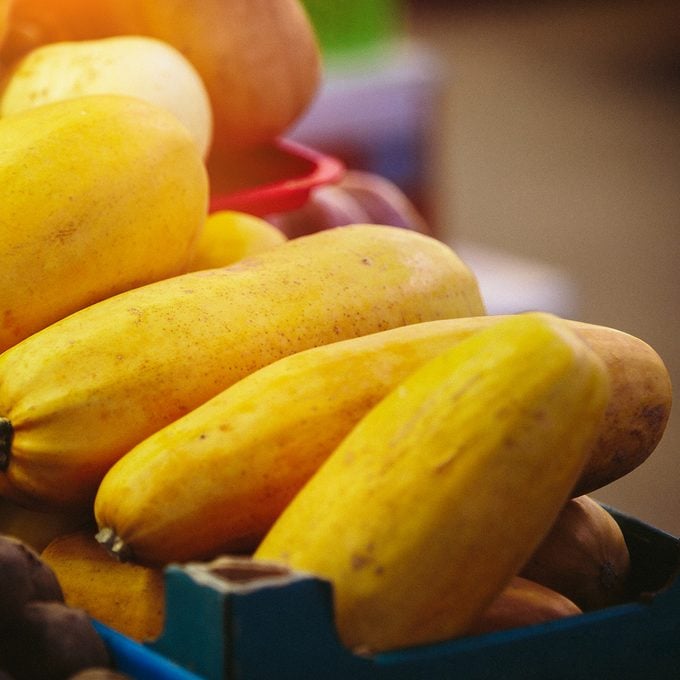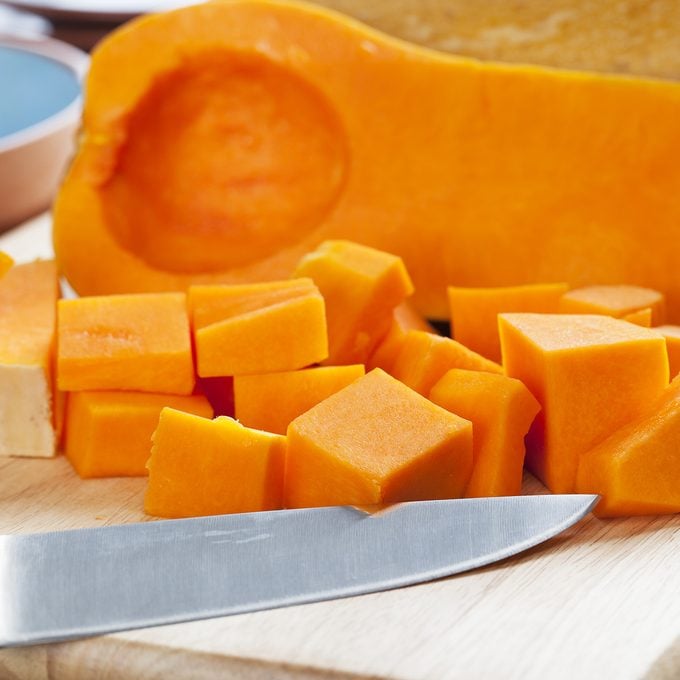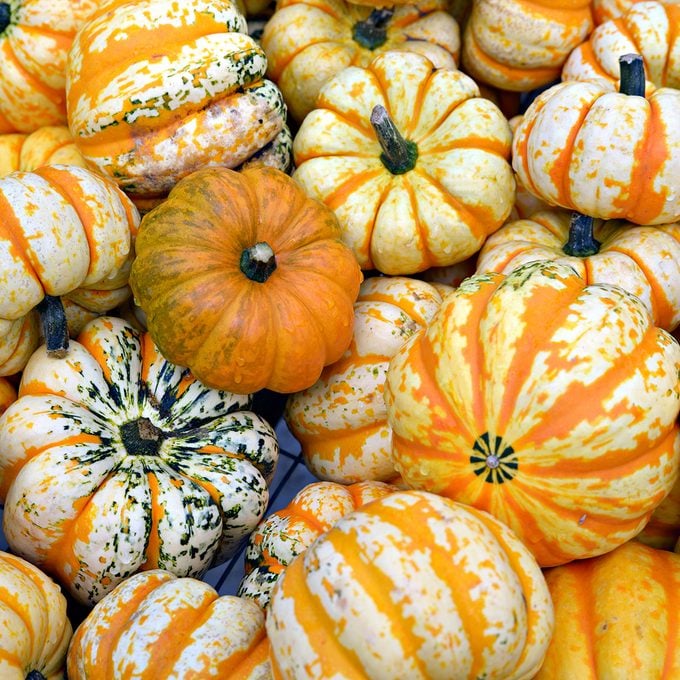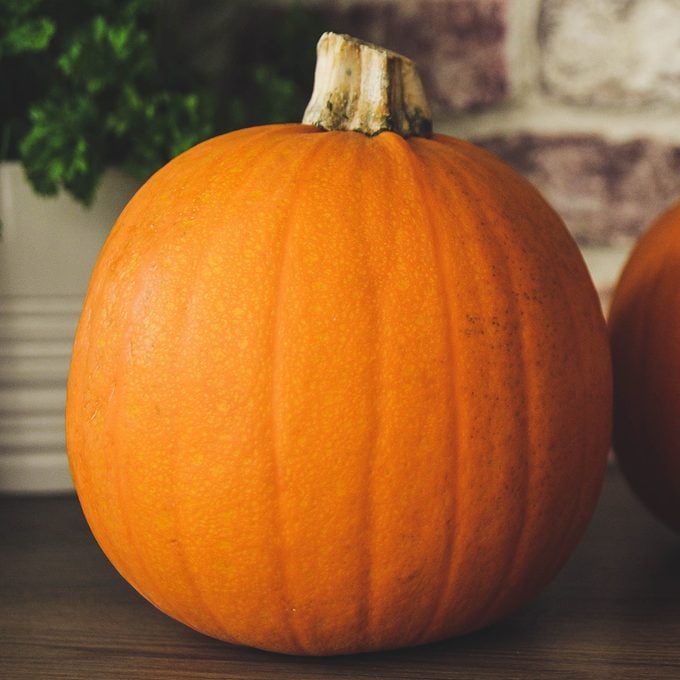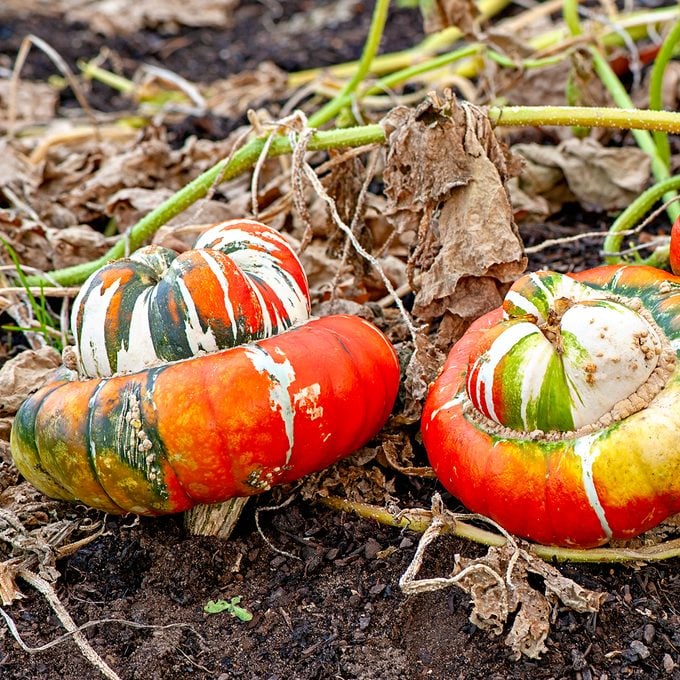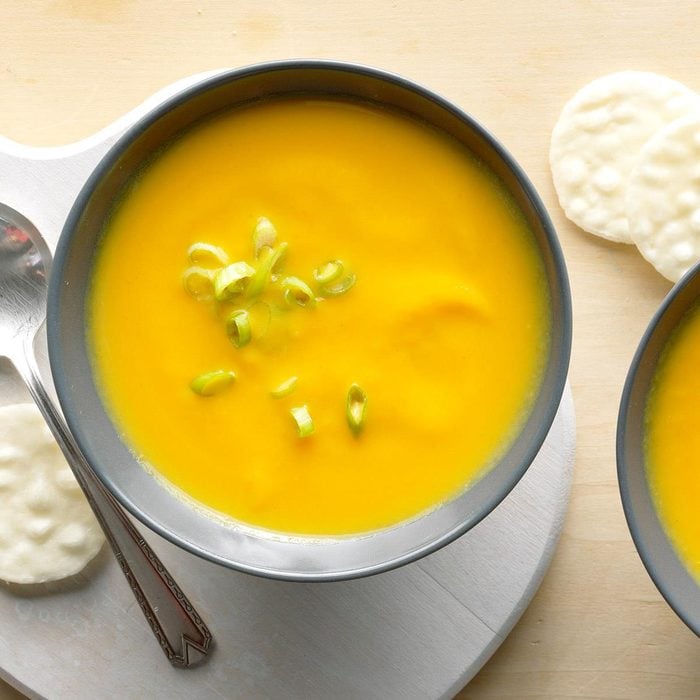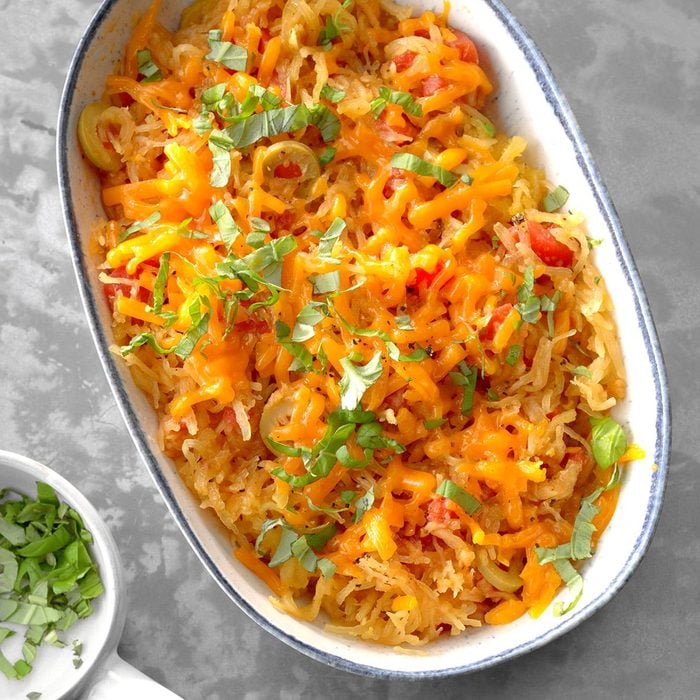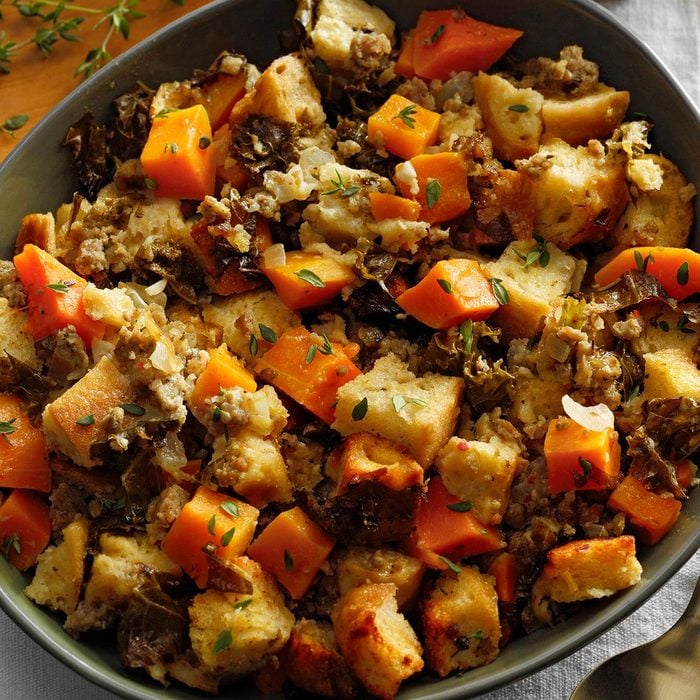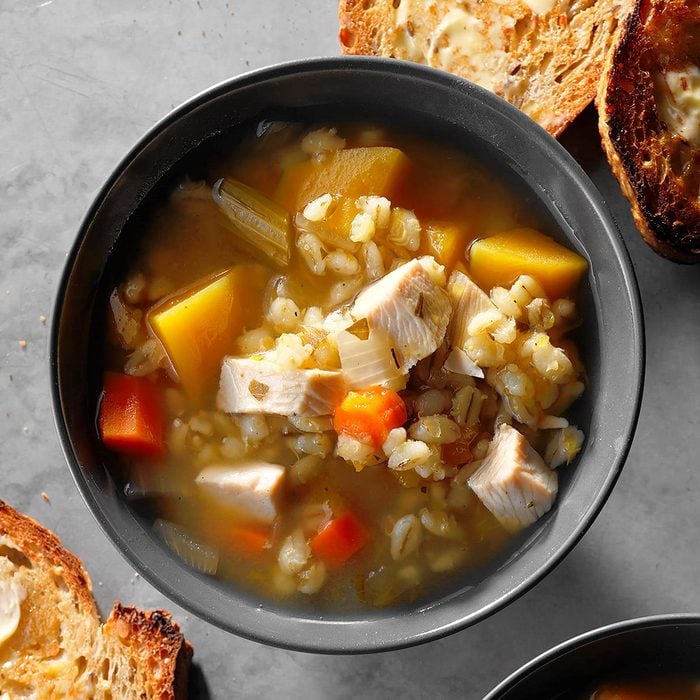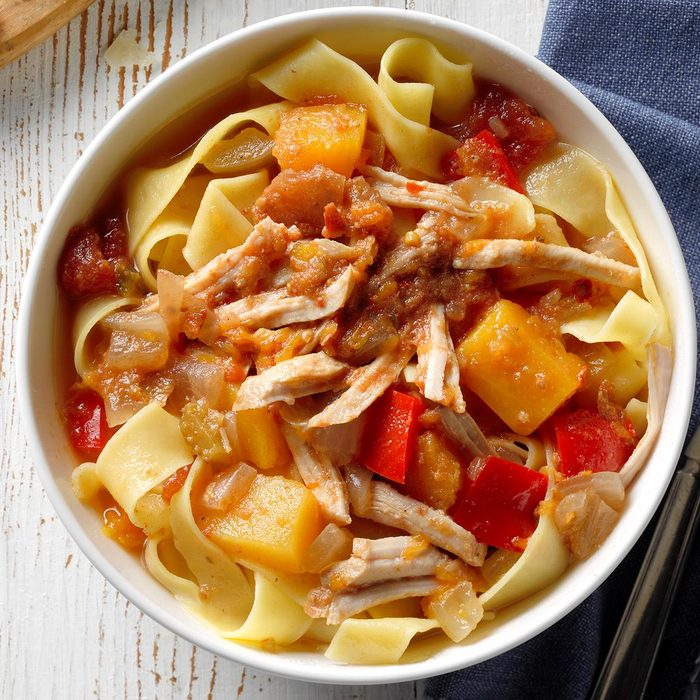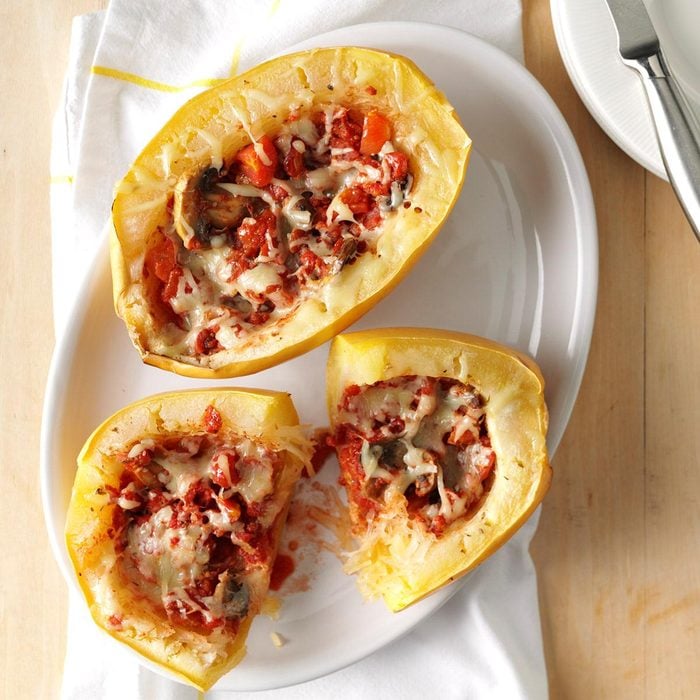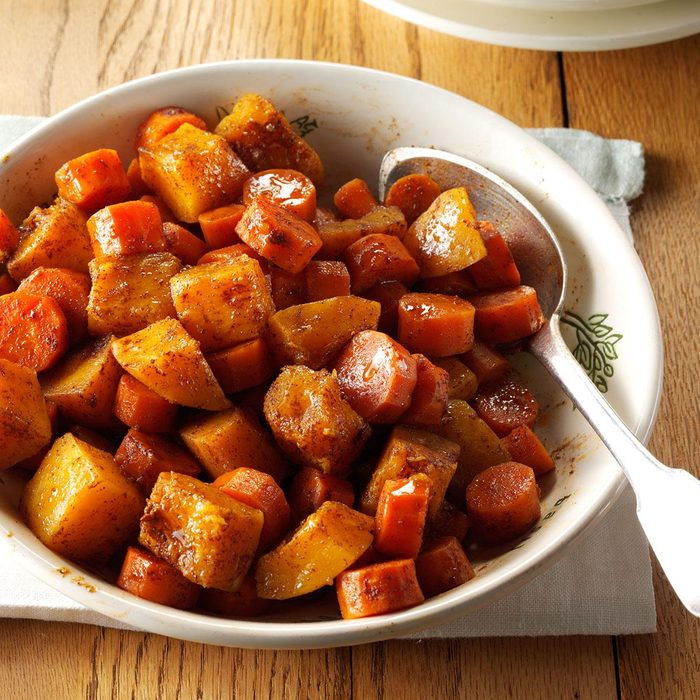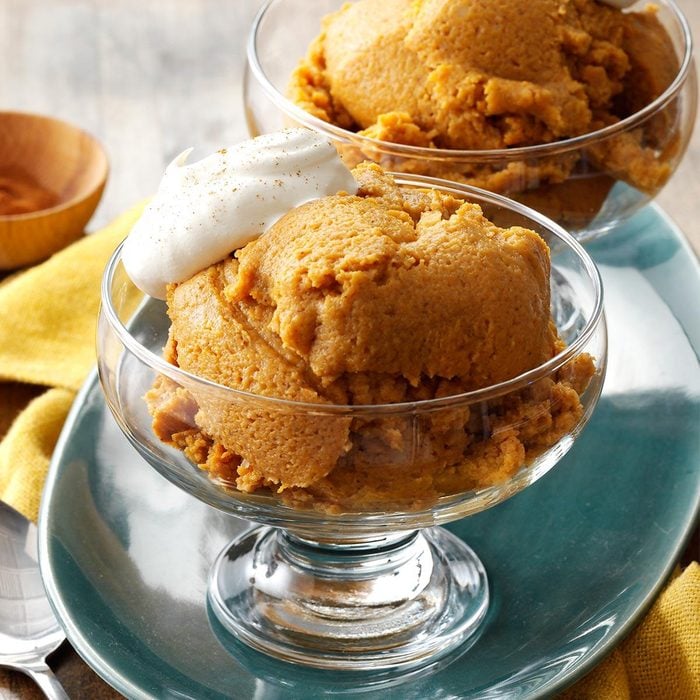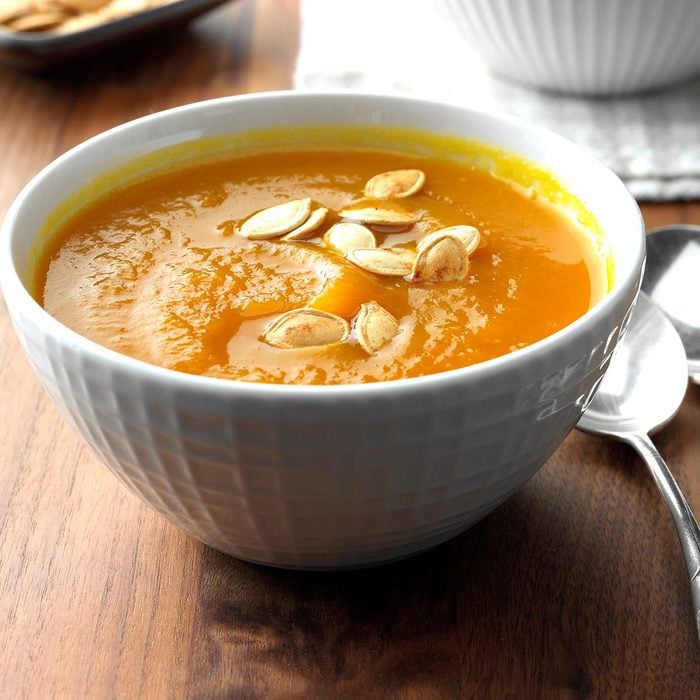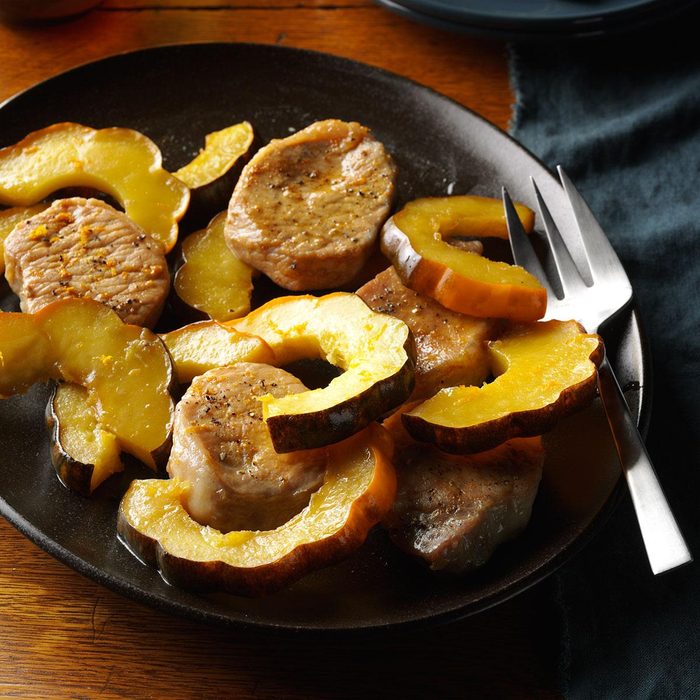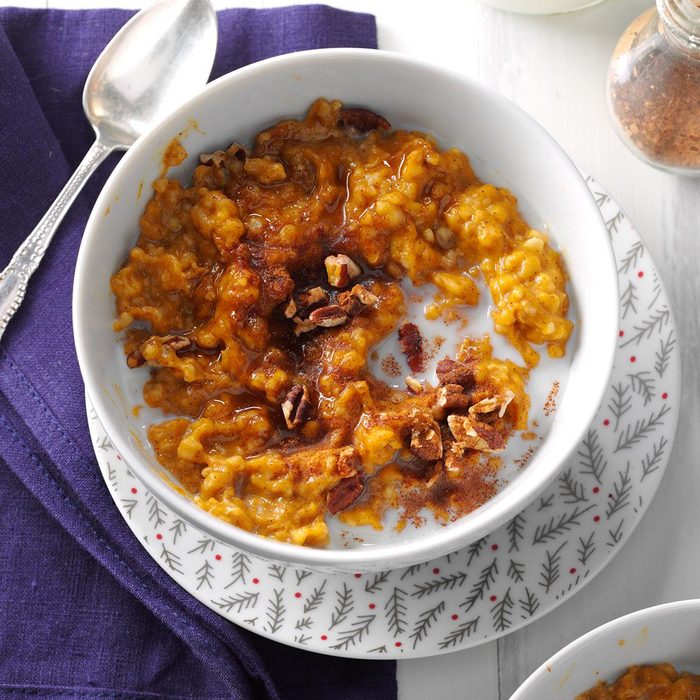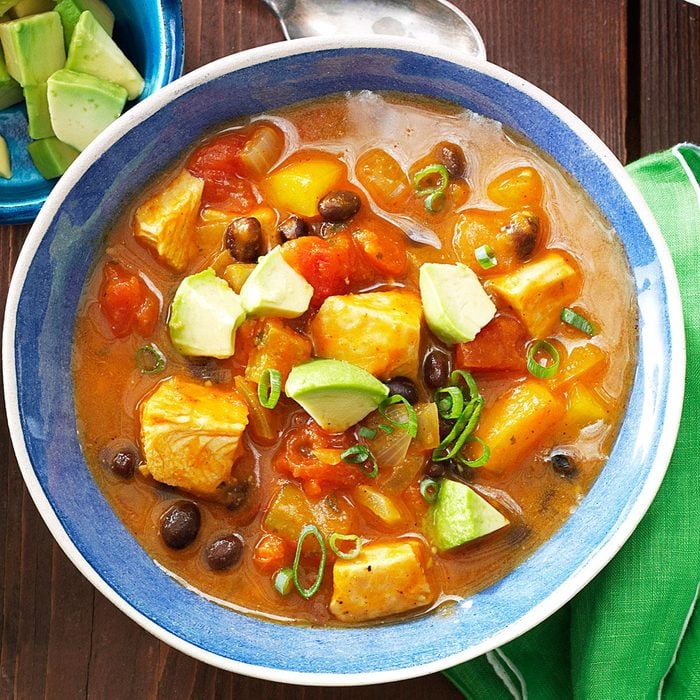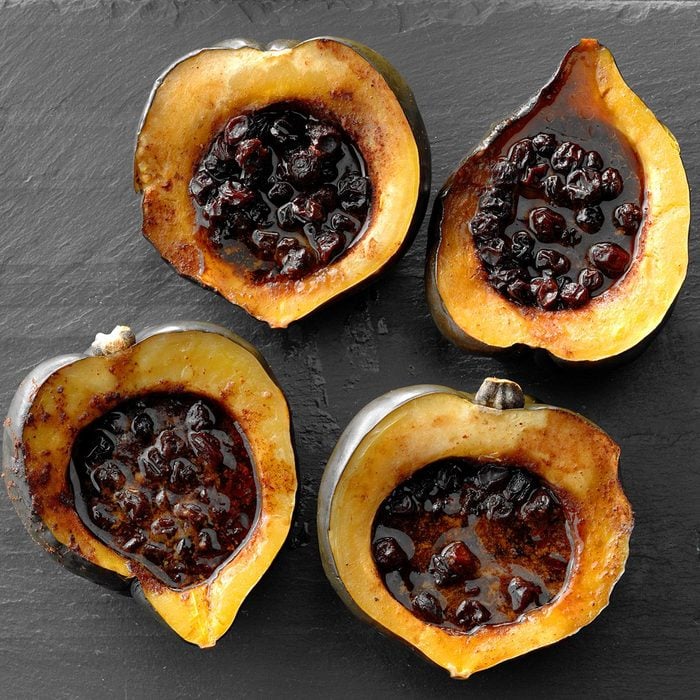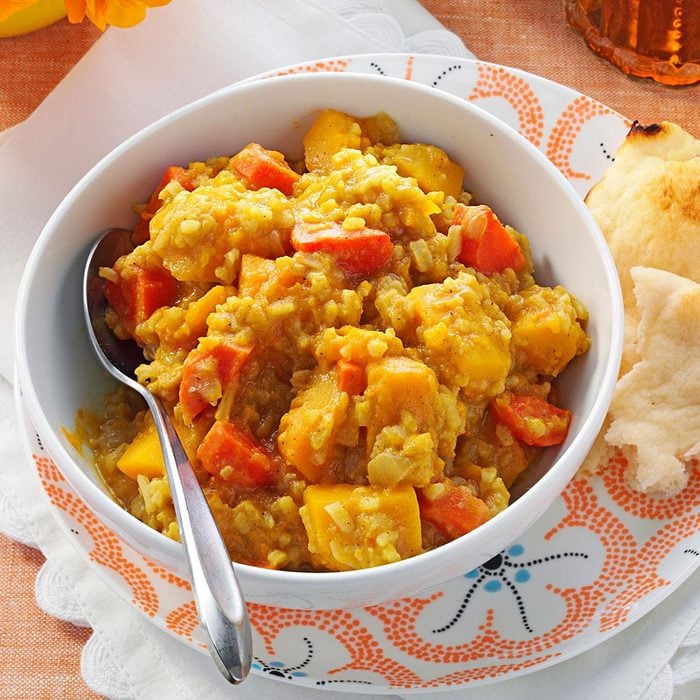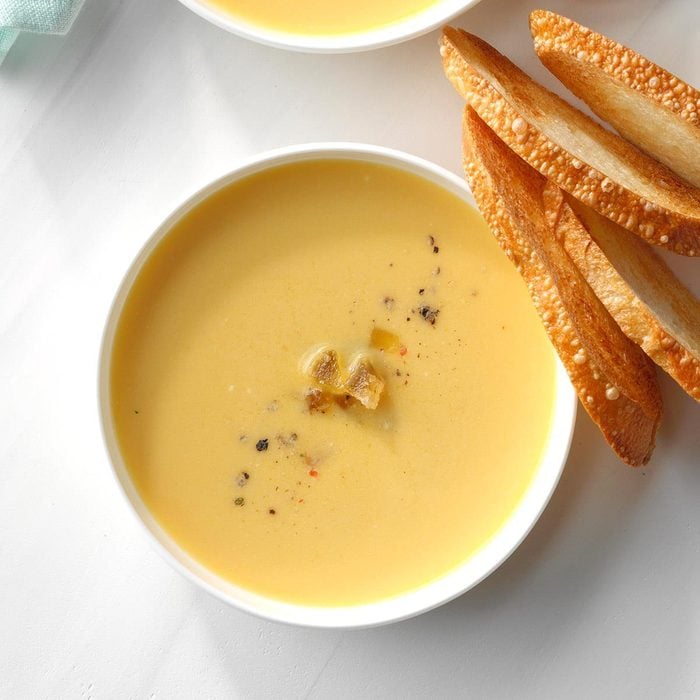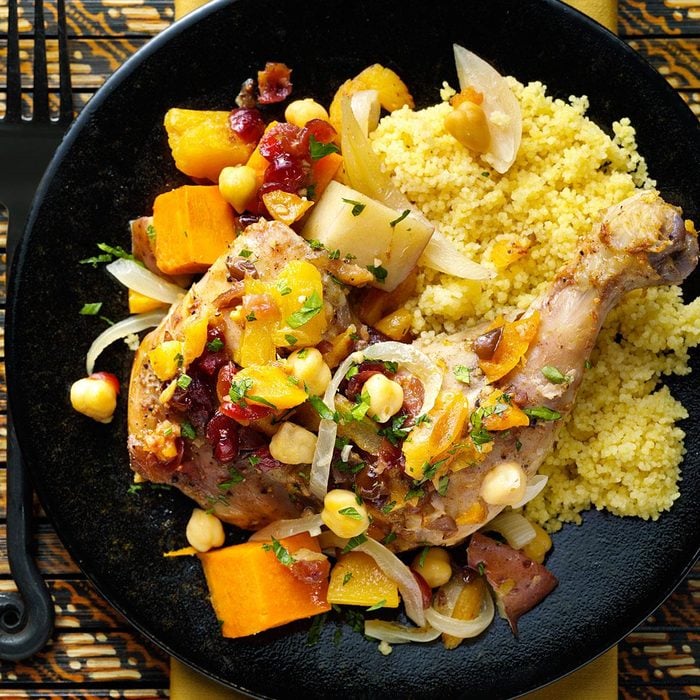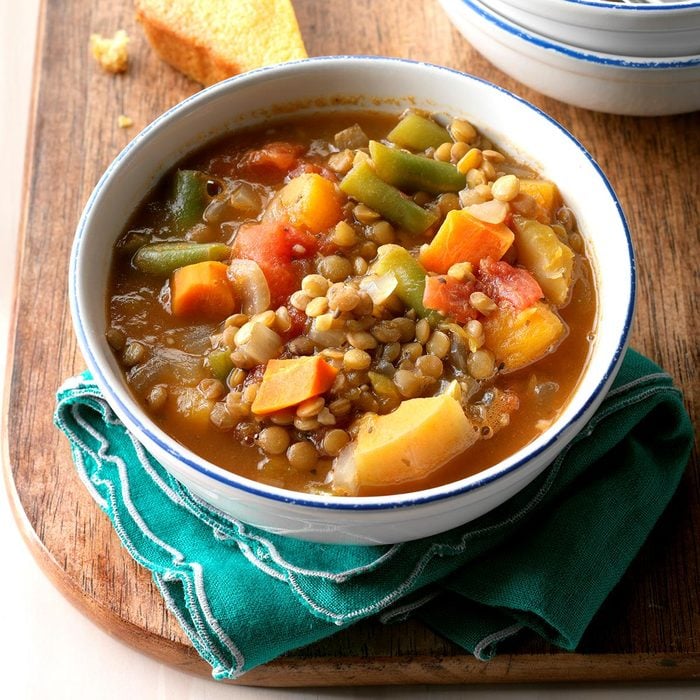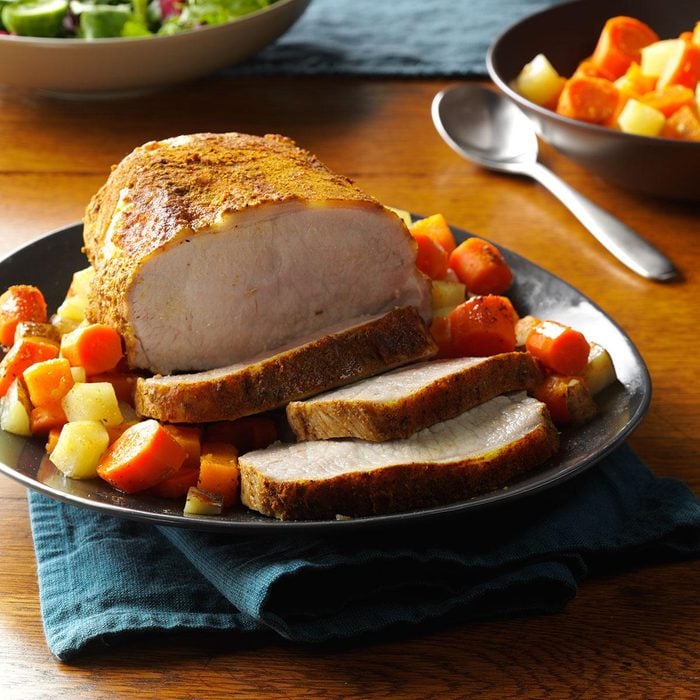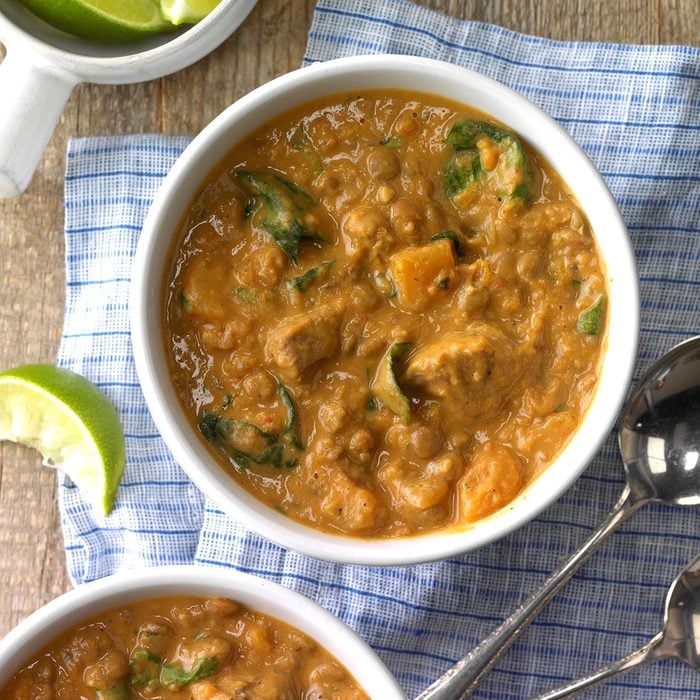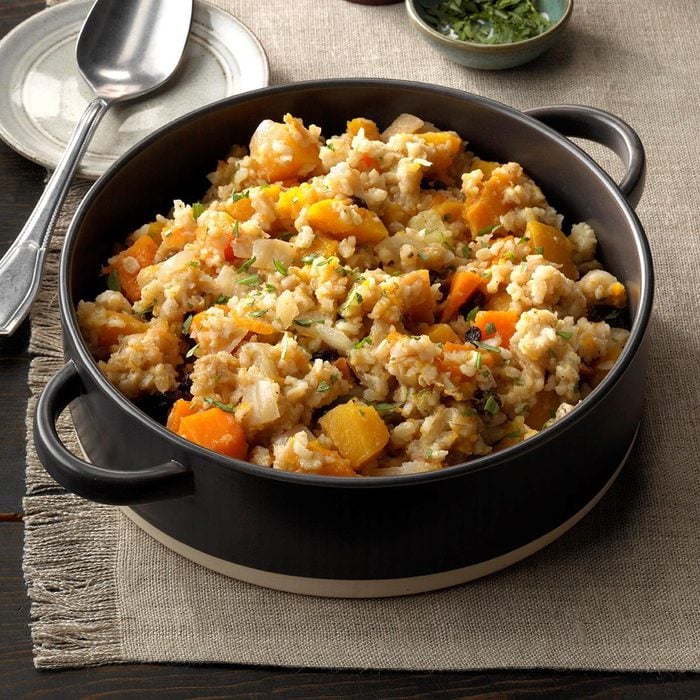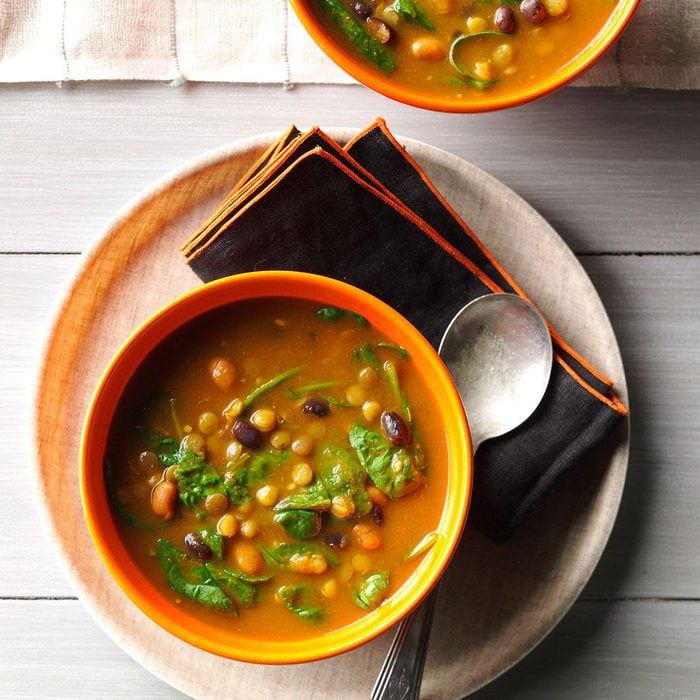12 Types of Winter Squash—and Tips for How to Use Them
Updated: Jun. 04, 2024

From acorn and butternut to turban and hubbard, here's what you need to know about the different types of winter squash.
There are many reasons to love winter squash, including its health benefits and long shelf life. Best of all, it’s versatile—with many different types of winter squash and hundreds of winter squash recipes to choose from, your taste buds will be happy all winter long.
Here’s a guide to 12 different types of winter squash and how to use them. We’ll also share tips for buying, preparing, freezing and storing all types of winter squash.
Types of Winter Squash
These are some of the most common types of winter squash. Note: You can substitute any sweet, orange-fleshed variety of winter squash for another.
Acorn Squash
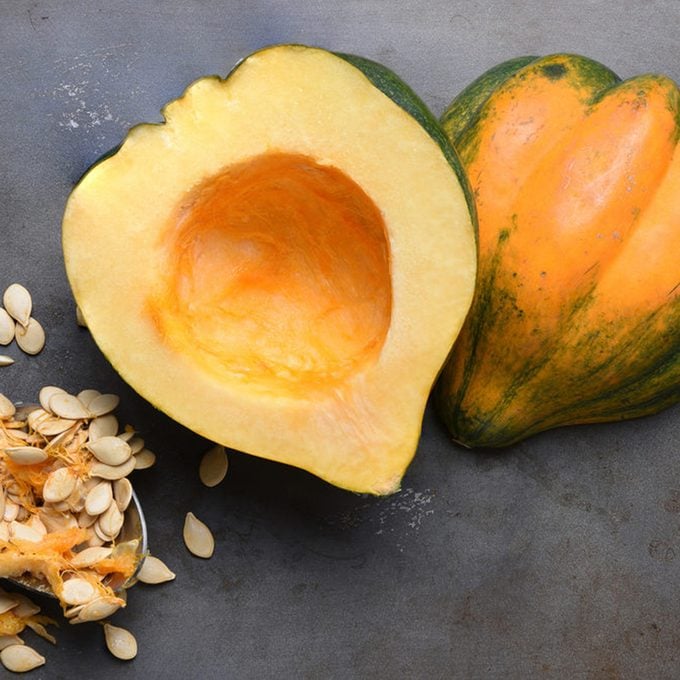
Acorn squash is small, round and has a dull, dark-green rind with orange markings. (Golden varieties of acorn squash are also available, but not as common.) Generally, avoid choosing acorn squash that have too much orange—they tend to be tougher and more fibrous. Acorn squash flesh is yellow-orange with a mild sweet and nutty flavor that’s perfect for baking, roasting, steaming, sauteing or even microwaving (be sure to pierce the skin first). Store acorn squash for up to 1 month.
How to use it: Because of its compact size, acorn squash can be halved and stuffed for recipes like Turkey Sausage-Stuffed Acorn Squash. It’s also tasty in both savory dishes, like Pork Chops & Acorn Squash, as well as sweet ones, like Maple-Glazed Acorn Squash.
Banana Squash
Banana squash has orange, pink or blue skin, and vibrant orange flesh. Large and elongated, one banana squash can weigh up to 35 pounds! Because of its size, banana squash is often sold in pre-cut chunks. With proper storage, whole banana squash can last for up to 6 months.
How to use it: Considered one of the most superior, versatile types of squash, banana squash pairs well with rich, bold flavors; herbs; and spices such as curry, ginger and cinnamon. Try roasting it the oven by following our guide for how to roast vegetables.
Buttercup Squash
Not to be confused with butternut squash, buttercup squash is dark green with light-green stripes and a distinctive round ridge on the bottom. Its bright orange, somewhat dry flesh is very mild in flavor and much sweeter than other types of winter squash. Store whole buttercup squash for up to 3 months.
How to use it: Buttercup squash is best steamed or baked, and it works well in curry dishes. Its skin is inedible and can be difficult to peel, so bake it first to soften it before scooping out the flesh to use in recipes like Buttercup Squash Coffee Cake. You can also mash buttercup squash to make a great variation of mashed sweet potatoes.
Butternut Squash
One of the most popular types of squash, butternut squash has a creamy, pale orange exterior. (The more orange the skin, the riper, drier and sweeter the flesh will taste.) The easiest way to prepare butternut squash is cut it into two sections—the slim neck and the bulbous, bell-shaped bottom—and handle each separately. Butternut squash skin is fairly easy to peel, and both the skin and the seeds are edible. Whole butternut squash will keep for up to 3 months when stored properly.
How to use it: There dozens of butternut squash recipes. With orange-yellow flesh that isn’t stringy and tastes similar to a sweet potato, butternut is a good choice for pureeing into soups like Chipotle Butternut Squash Soup.
Carnival Squash
Carnival squash is a cross between acorn and sweet dumpling squash, and it looks as fun as its name implies. The exterior of a carnival squash has deep furrows and lively variegated stripes and patterns in green, orange and creamy yellow. Look for carnival squash that still have some green on them, indicating that they’re ripe but not past their prime. Store whole carnival squash for up to 1 month.
How to use it: Carnival squash has pale-orange flesh and a flavor that’s similar to butternut squash. It’s best when roasted and added to stew, risotto, curry, or pasta, or blended into soups and sauces.
Delicata Squash
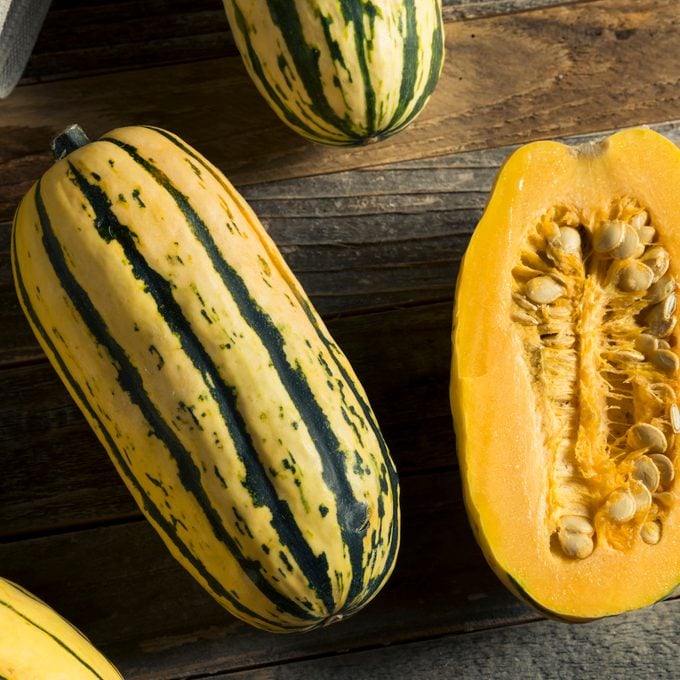
This type of squash, also known as Bohemian or sweet potato squash, is cylindrical in shape and features pale-yellow skin with green stripes. When cooked, its orange flesh tastes similar to sweet potatoes with an earthy flavor. Delicata squash has a rind that’s more delicate than most squash varieties, making it easy to work with. Store whole delicata squash for up to 3 months.
How to use it: Because of its shape, delicata squash lends itself well to stuffed dishes like Quinoa-Stuffed Squash Boats. Delicata squash is most often roasted, steamed or microwaved. Its skin is edible, so there’s no need to remove it before cooking.
Hubbard Squash
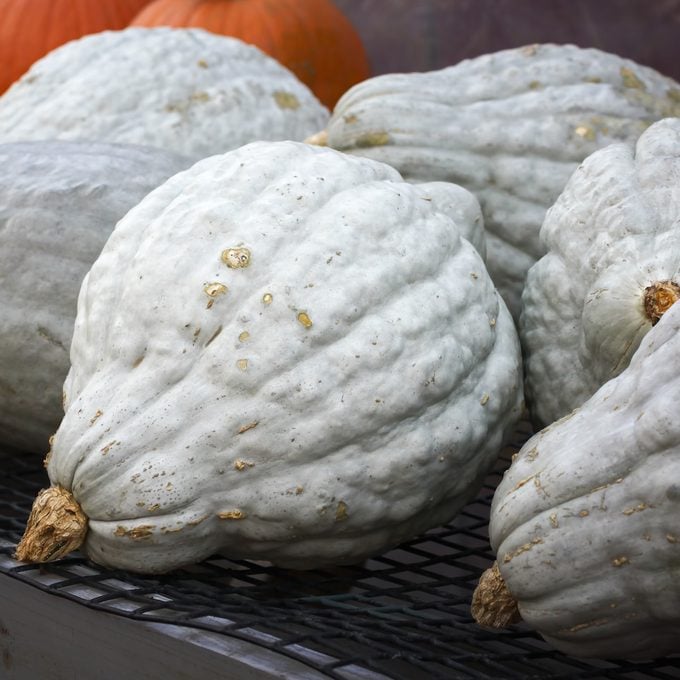
Large and bumpy, Hubbard squash has very hard orange, green or grey-blue skin, and sweet orange flesh. Because of its size, it’s usually sold pre-cut and seeded. Store it whole for up to six months.
How to use it: Hubbard squash is best for mashing or pureeing and turning into pie, like this Hubbard Squash Pie, which is a unique alternative to pumpkin pie. You can also peel and boil, roast, bake, or steam it.
Kabocha Squash
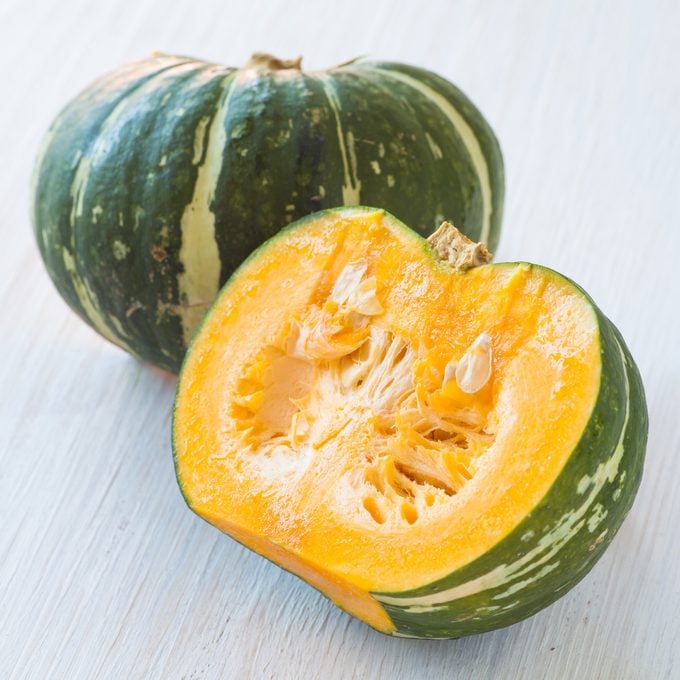
Small, squat and most commonly available with dark-green skin, kabocha squash is also known as Japanese pumpkin. Its sweet, bright-orange flesh tastes like a cross between pumpkin and sweet potato. Store whole kabocha squash for up to 1 month.
How to use it: In Japan, kabocha is widely used in tempura, and it’s delicious in this Fig-Carrot Stuffed Kabocha Squash recipe. You can also mash up cooked kabocha squash and use it as a thickener in soups and stews.
Spaghetti Squash
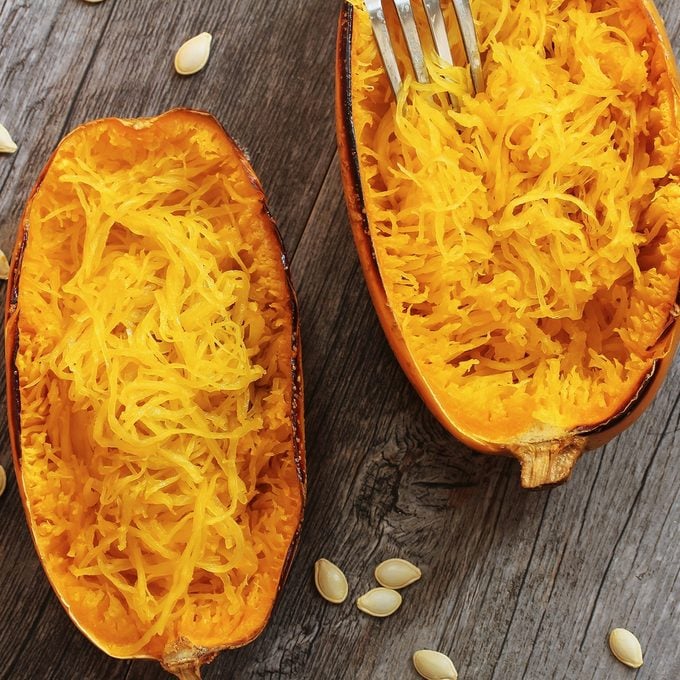
If you’ve been searching for a low-calorie alternative to pasta, this is it. Spaghetti squash is cylindrical in shape with pale to bright yellow skin (the yellower the skin, the riper the squash). Once cooked, you can scrape the flesh into strings that resemble spaghetti noodles—except they have about 165 fewer calories and 30 fewer carbohydrates per cup. You can store whole spaghetti squash at room temperature for several weeks.
How to use it: Spaghetti squash is most popular as a healthy substitute for noodles—there are many spaghetti squash recipes for when you’re craving pasta but want fewer carbs. (Here’s how to make spaghetti squash.)
Find out if you can freeze spaghetti squash.
Sugar Pumpkin
Also called pie pumpkins, sugar pumpkins are not the pumpkins you carve for Halloween. Like their larger counterparts, they have bright orange skin, but sugar pumpkins are small and round with bright-orange flesh. Store whole sugar pumpkins for up to 1 month.
How to use it: Sugar pumpkins have a classic pumpkin flavor. You can puree them to make your own pumpkin pie from scratch, but note that the texture will be a bit more fibrous than pies made with canned pumpkin. (Here’s the difference between fresh and canned pumpkin.) On the savory side, sugar pumpkins are tasty in soups and curries, and they’re also delicious in this Chicken with Sugar Pumpkins and Apricots recipe.
Sweet Dumpling Squash
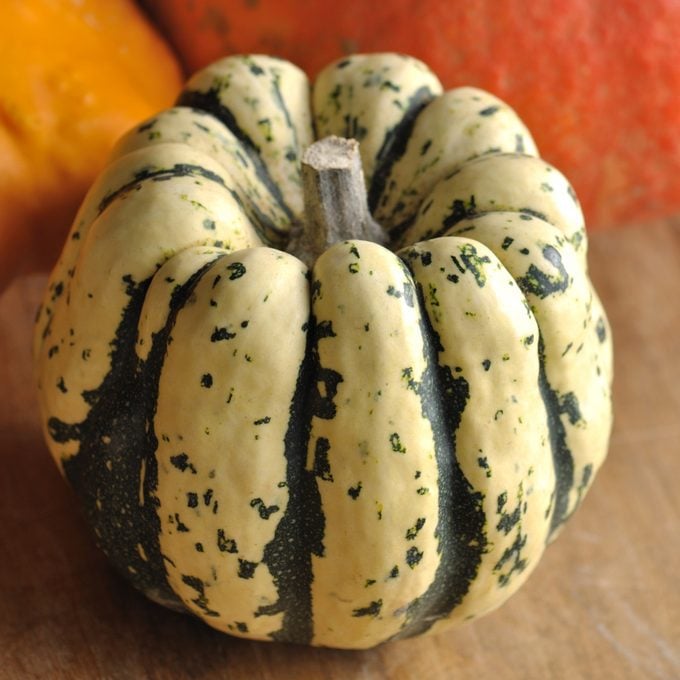
Small and compact with white-yellow skin and green striations, sweet dumping squash tastes similar to sweet potatoes or corn. Store whole sweet dumpling squash for up to three months.
How to use it: Sweet dumpling squash has edible skin, and it’s is a good substitute for pumpkin or sweet potato. Try using sweet dumpling squash instead of butternut squash in this Honey-Thyme Butternut Squash recipe.
Turban Squash
This large, decorative squash variety has bumpy skin that can be green, orange, yellow, or all three colors in one. The blossom end features a turban-like cap, and the flesh tastes mild to sweet. Store whole turban squash for up to 3 months.
How to use it: Because of its mild flavor, turban squash pairs well with a wide variety of foods, from pears and cilantro to ground beef and chicken. To prepare this type of squash, cut the turban section off and slice both sections into cubes. Then bake, roast or steam it and remove the skin once it’s cool.
Winter Squash Tips
How do I buy winter squash?
Always choose a firm squash with no blemishes, bruises or soft spots. The skin should be dull, not glossy. The stem should be intact and the squash should feel heavy for its size.
How do I prepare winter squash?
To prepare winter squash, remove the skin with a knife or vegetable peeler, cut it in half, and remove the seeds and fibers. (Here’s our guide to how to cut squash.)
Roasting is one of the most common cooking methods for winter squash (here are some of our best baked squash recipes). You can also put winter squash in a slow cooker and roast squash seeds the same way you make roasted pumpkin seeds.
How do I store winter squash?
One of the great advantages of winter squash is its long shelf life—assuming you store it properly. Store whole winter squash in a cool, dry and well-ventilated space that’s between 45 and 50 degrees.
Once cut, cover winter squash tightly with plastic wrap and keep it in the fridge for up to 5 days. Baked or steamed squash can be frozen to use later in soups (like these butternut squash soup recipes), as well as casseroles, breads, muffins and pies.
Is squash healthy?
Yes! Winter squash is packed with complex carbohydrates; dietary fiber; manganese; folate; vitamins A, B6 and C; and loads of antioxidants. It’s also a great low-calorie option if you’re on a diet.
What is the difference between winter squash and summer squash?
Winter squash is commonly available from late summer through the mid-winter months. Aside from this seasonality, winter squash differs from summer squash in that it’s generally sweeter, denser and more firm. Winter squash also has a harder outer skin.






















